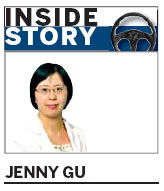Cars
Mature auto markets recovering, but a new challenge could loom
Updated: 2011-01-31 15:41
(China Daily)

As growth slows at home, China's carmakers looking for new inroads overseas
A year after the recovery from the financial crisis began, the overall outlook for vehicle sales across the globe is good.
Both manufacturers and market observers are optimistic, as was evident at the recent Detroit Auto Show.
We at JD Power expect 6 percent growth in global sales to 76.5 million units in 2011.
Emerging markets will continue to drive sales, with China contributing 19 million light vehicles, up 11 percent from 2010.
India is expected to grow the most in 2011 with an anticipated increase of 17 percent to 3.2 million units. Eastern Europe is expected to climb 4 percent this year, but continued weakness in Western Europe will see it down 1.5 percent.
The important US market will do much better than the last two years. It had a very strong December and full year sales for 2010 were up 11 percent over 2009. We are forecasting another increase this year, roughly 11 percent, to 12.8 million units, with further upside potential.
Yet despite recent growth, the US industry is still down substantially when compared with the annual average 16 million units between 2000 and 2007. The US and Western markets on the whole have become extremely saturated and competitive.
So while we are seeing recovery in these markets, the real volume growth will continue to be in emerging markets.
Robust demand
We will continue to see strong growth in China supported by robust consumer demand, particularly in second- and third-tier cities.
Expiration of a sales tax break for small vehicles and the recent announcement of a quota system for car licenses in Beijing may slow sales in some segments, but will have a limited impact on overall vehicle sales.
Passenger vehicle sales are expected to maintain double-digit growth in the next few years due to a solid demand among Chinese consumers who aspire to a better and mobile lifestyle.
The expiration of China's subsidy policies is expected to have a limited impact on passenger vehicles because, in general, consumer demand remains solid. The exception will be commercial vehicles. The demand for minivans is expected to decrease because partially stimulated growth in the past two years is thought to have "pulled demand forward".
Beijing's new policy limiting new car licenses will negatively affect sales of medium-to-low end cars. We expect a reduction of around 200,000 to 300,000 units in car sales in 2011 as a result.
The passenger vehicle market may well be affected if other big cities in China follow the same policy. In Beijing, the difficulty in obtaining a license plate is likely to lead buyers to larger cars or SUVs and MPVs.
Going global
| ||||
Geely's purchase of Volvo and other Chinese carmaker attempts to acquire global brands show their ambition to expand, but it will take a long time to enter mature markets such as the US or Europe as Chinese cars need to make focused efforts to raise awareness of their brands.
But the drive for new markets has already had an impact - helping improve product quality.
The quality gap between Chinese domestic brands and international brands is the narrowest margin yet observed in the China market. In 2010 there were 89 problems per 100 vehicles, down from 396 in 2000.
More Chinese automakers have acquired technology from international players and are applying them to their own models. We also see a growing number of locally branded models that are designed abroad.
Until now the automakers in China have been struggling to keep up with the booming domestic demand.
But as Beijing looks to slow things down, it could encourage local automakers to ramp up their international ambitions in an effort to fully utilize their ever-growing production capacities.
So while automakers in mature markets around the world only just begin to recover from the economic crisis, the next challenge they face could be the increasingly sophisticated Chinese automakers looking for inroads to their more established markets.
The author is a researcher at JD Power and Associates.
Specials

Spring Festival
The Spring Festival is the most important traditional festival for family reunions.

Top 10
A summary of the major events both inside and outside China.

A role model
Alimjan Halik had been selected as the "Cyberspace Personality Who Moved the Hearts of the Chinese in 2010".



